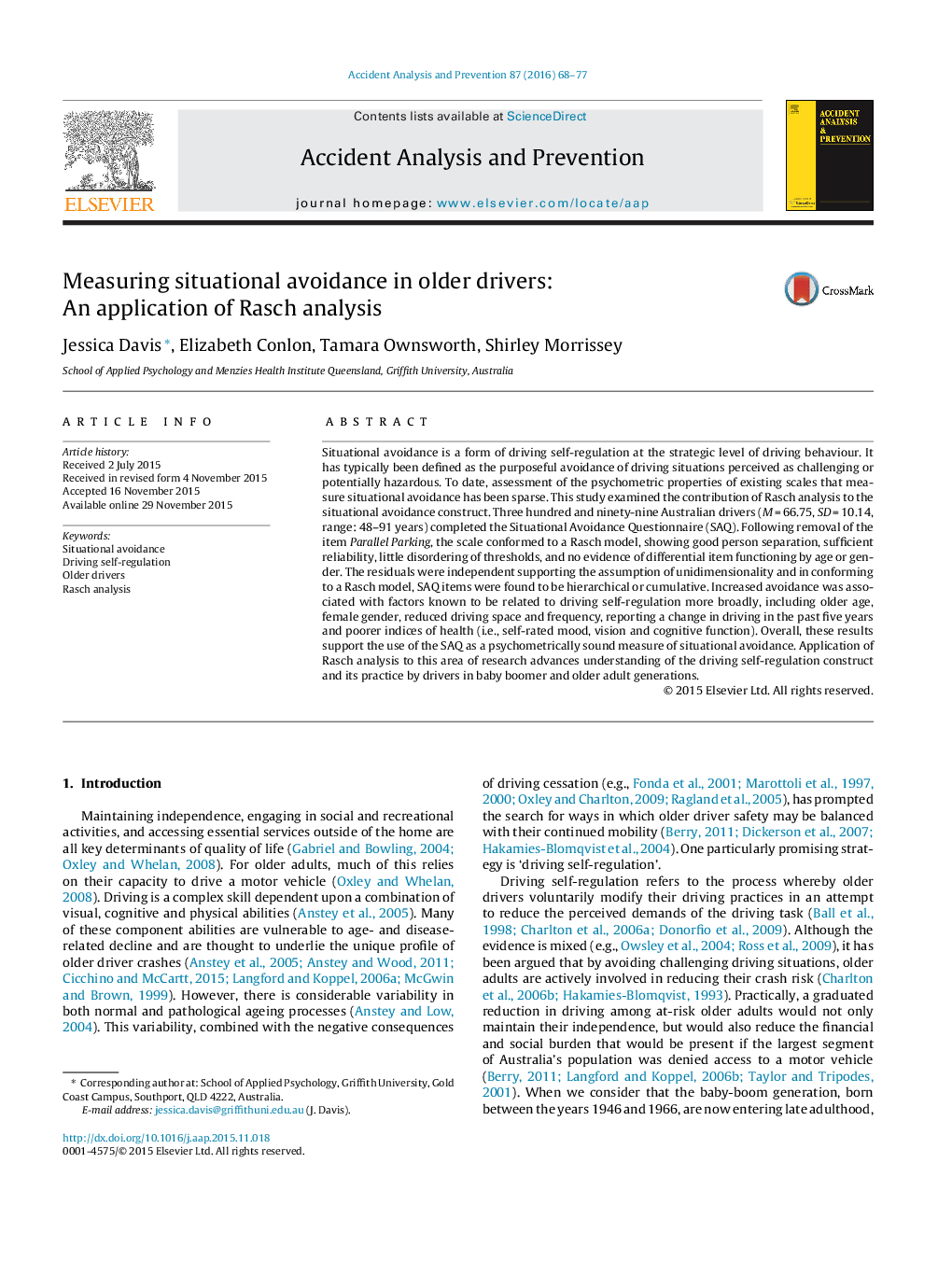| کد مقاله | کد نشریه | سال انتشار | مقاله انگلیسی | نسخه تمام متن |
|---|---|---|---|---|
| 572082 | 1452910 | 2016 | 10 صفحه PDF | دانلود رایگان |
• Rasch analysis of the Situational Avoidance Questionnaire was conducted.
• Situational avoidance was unidimensional and cumulative, occurring on a continuum.
• The continuum ranged from night driving in wet weather to one-lane roundabouts.
• The scale is psychometrically sound for baby boomer and older adult generations.
• Situation avoidance is part of a multidimensional driving self-regulation construct.
Situational avoidance is a form of driving self-regulation at the strategic level of driving behaviour. It has typically been defined as the purposeful avoidance of driving situations perceived as challenging or potentially hazardous. To date, assessment of the psychometric properties of existing scales that measure situational avoidance has been sparse. This study examined the contribution of Rasch analysis to the situational avoidance construct. Three hundred and ninety-nine Australian drivers (M = 66.75, SD = 10.14, range: 48–91 years) completed the Situational Avoidance Questionnaire (SAQ). Following removal of the item Parallel Parking, the scale conformed to a Rasch model, showing good person separation, sufficient reliability, little disordering of thresholds, and no evidence of differential item functioning by age or gender. The residuals were independent supporting the assumption of unidimensionality and in conforming to a Rasch model, SAQ items were found to be hierarchical or cumulative. Increased avoidance was associated with factors known to be related to driving self-regulation more broadly, including older age, female gender, reduced driving space and frequency, reporting a change in driving in the past five years and poorer indices of health (i.e., self-rated mood, vision and cognitive function). Overall, these results support the use of the SAQ as a psychometrically sound measure of situational avoidance. Application of Rasch analysis to this area of research advances understanding of the driving self-regulation construct and its practice by drivers in baby boomer and older adult generations.
Journal: Accident Analysis & Prevention - Volume 87, February 2016, Pages 68–77
